Smartphones in the classroom? Less banning and more education
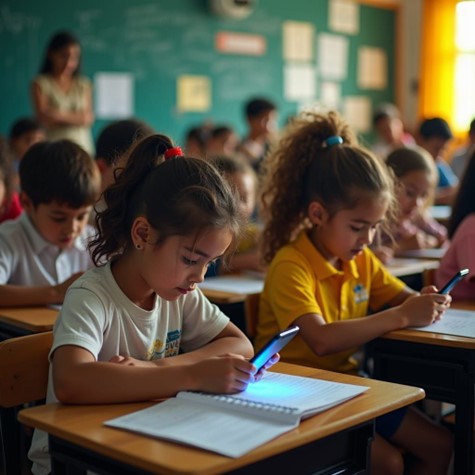
What is worrying (and criticizable) is that this set of administrative regulations are proposed and applied without offering educational measures to address the problems mentioned. There is an underlying belief, naïve by all accounts, that vetoing or banning the presence of mobile technologies in schools will almost magically protect minors from the harmful effects of these devices. Furthermore, it is assumed that preventing their use during school time will increase learning and neutralize undesirable phenomena such as cyberbullying, techno-addiction, lack of concentration in studies or the consumption of inappropriate content for children and adolescents. This technophobic creed or denialism of educational digitalization, as Sanchez and Adell (2023) point out, “waves the flag of fear of technology and assumes, therefore, that with its elimination everything will improve. It therefore applies a magical thinking that shuns the responsibility of adults and managers in educational improvement”.
The thesis of digital prohibitionism carries implicit ideas or assumptions typical of a neoconservative discourse born of nostalgia, fear and resistance to educational and social change in the 21st century. At bottom, it is a vision or perspective where the fear of the dystopian future that the unbridled development of technology is supposedly provoking has been installed. As Suárez and Alonso (2023) point out, “in this narrative, prohibiting has become the easiest and most reductionist response, but also the least sensible”.
What is urgent and necessary is to articulate educational measures from different angles, sectors and institutions in the face of the complex and worrying problems that are sometimes generated by the overuse and abuse of technologies in children and young people. Thus, it would be necessary to promote educational measures in schools such as:
- Cultivate and develop in students the so-called digital competence, which is a much more complex learning process than the mere fact of handling devices and software. This competence or digital literacy involves the development of cognitive, socio-communicative, axiological and emotional aspects or dimensions in the face of technology. At the same time, students should also be encouraged to develop transversal or soft skills such as critical thinking, creativity, information analysis, and expression in various contexts using technology. Likewise, multiple literacy must be promoted in the different languages and expressive forms of the present time, such as hypertexts, audiovisual and iconic formats, transmedia, augmented reality, computational thinking, robotics, …
- A teaching and pedagogical model must be implemented so that students learn actively and are not merely recipients of disciplinary content. This implies articulating didactic planning and methodologies where students are asked to be creators of digital knowledge objects that can be shared and disseminated on the network; that favors collaborative and group work not only with their classmates, but also with students from other classes and/or centers.It should be a model that demands and encourages the exploration, search and analysis of information by students beyond the academic and brings them closer to the real world. In order to carry this out, it is also essential to develop training programs for teachers’ digital competence.
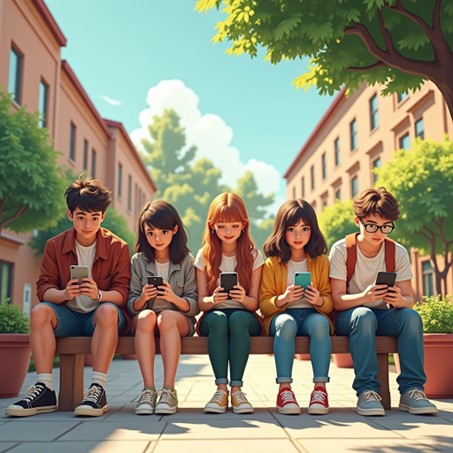
Imagen de elaboración propia creada con la herramienta de IA https://creator.nightcafe.studio/
Likewise, families, in the context of the home, must assume the responsibility of educating their sons and daughters in the responsible and conscious use of technology.Therefore, rather than prohibiting, measures should be developed such as:
- Accompany the use that children make of the phone from their early years and share with them digital experiences (video clips, games, online conferences, …). Always be with them when they explore cyberspace talking and explaining the risks associated with technological overuse.
- Adults (mothers and fathers, teachers) should set an example of a rational and balanced use of cell phones or cell phones since children and adolescents tend to imitate the behavior of their parents. There should be no contradiction or incoherence between parental discourse and the practices they carry out at home with these technologies.
In short, prohibiting is not the solution. It is a short-sighted approach in the face of the bewilderment of the harmful and dysfunctional effects generated by technologies in childhood and adolescence.If we want to prepare for the future, we must educate today’s students in schools and institutes so that they are cultured, competent and able to cope successfully in the digital society.And it is also essential to do so in the family environment.It is such a complex problem that we have to do it jointly and in a coordinated way from schools, homes and administrations.
References
Albalad, J. (2023). El uso de los móviles en el contexto español y europeo. Cuadernos de Pedagogía, 547, noviembre.
Sanchez, M. y Adell, J. (2023): El negacionismo digital. Diario de la Educación 24/07/2023 https://www.researchgate.net/publication/372680100_El_negacionismo_digital
Suárez, C. y Alonso, C. (2023): Jóvenes y móviles. Cuadernos de Pedagogía, 547, noviembre.
END NOTE: This text is an extract from the chapter of M. Area-Moreira (2024) “Nostalgia, fears and prohibitions. The digital counter-reform in education” published in the book M. KAP (comp) : Didactics and Technology. Crossroads, debates and challenges. EUDEM, Editorial de la Universidad Nacional de Mar del Plata, 2024 (Argentina). It can be downloaded at https://t.co/HvufPH4MSY
Tags: Mobile technology in classrooms, educational technology, digital prohibitionism

Imagen de elaboración propia creada con la herramienta de IA https://creator.nightcafe.studio/
Autor:
Manuel Area Moreira
Laboratory of Education and New Technologies (EDULLAB)
University of La Laguna

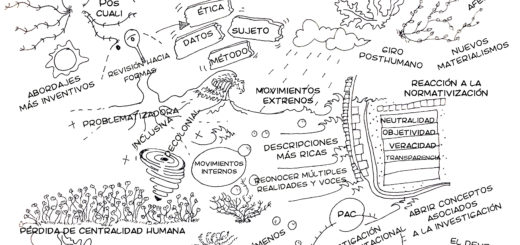
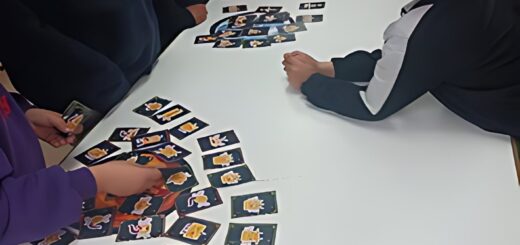


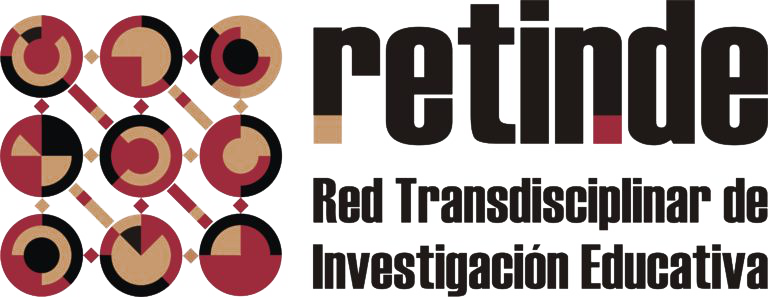

1 Response
[…] para abordar este complejo asunto. Una de las opiniones discordantes más críticas la plantea Manuel Area Moreira, de la Universidad de La Laguna, que propone “más educación y menos prohibición”, y habla de “la contrarreforma digital de […]